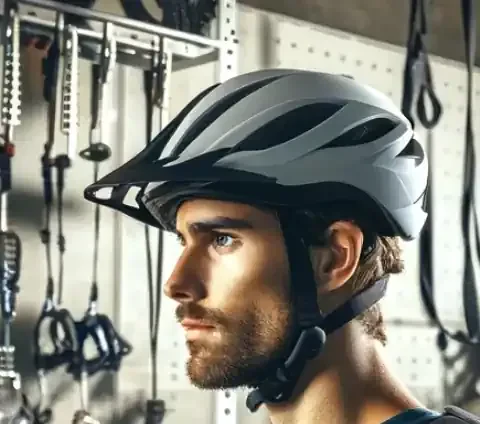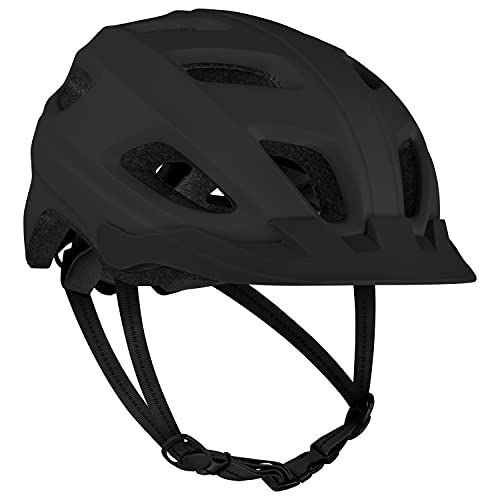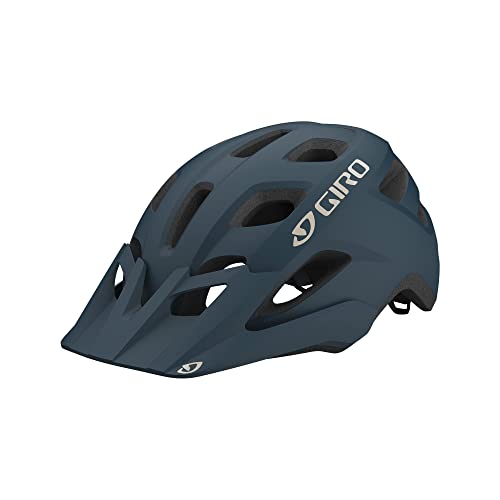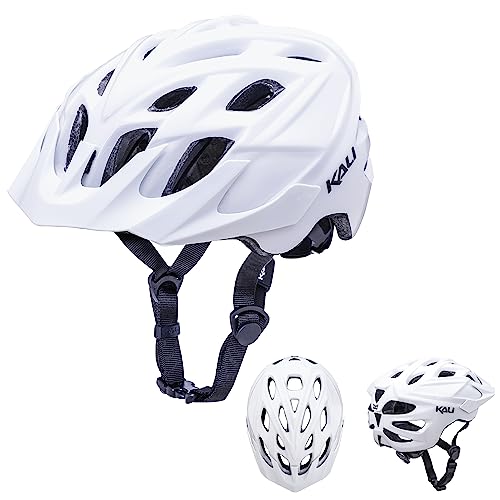Introduction
Bike helmets stand as the cornerstone of safety for cyclists, serving as a vital shield against potential head injuries in the event of accidents. This comprehensive guide aims to delve into the intricacies of bike helmets, from their historical evolution to the modern technologies shaping their design. Whether you're a seasoned cyclist or a novice rider, understanding the importance of proper helmet usage is paramount for ensuring your safety on the roads and trails.
Importance of Bike Helmets
The importance of bike helmets cannot be overstated. Beyond being a legal requirement in many jurisdictions, helmets serve as the primary defense against head injuries, which can range from mild concussions to severe trauma. Statistics consistently highlight the effectiveness of helmets in reducing the risk of head injuries in cycling accidents. According to studies conducted by the Centers for Disease Control and Prevention (CDC), wearing a helmet can reduce the risk of head injury by up to 85%.
Moreover, helmets play a crucial role in mitigating the severity of traumatic brain injuries (TBIs), which can have long-lasting repercussions on an individual's cognitive functions and overall quality of life. By absorbing and dispersing the impact force during a collision, helmets help safeguard the brain from direct trauma, significantly lowering the likelihood of life-altering injuries.
Aside from personal safety, the societal benefits of helmet usage are equally compelling. Reduced healthcare costs, enhanced productivity, and improved public health outcomes are among the broader advantages associated with widespread helmet adoption. By promoting a culture of safety-conscious cycling, communities can foster environments where individuals feel empowered to prioritize their well-being while enjoying the myriad benefits of cycling.
Brief History of Bike Helmet Evolution
The evolution of bike helmets is a testament to human ingenuity and our relentless pursuit of safety and innovation. The earliest iterations of bike helmets can be traced back to the late 19th century, with the invention of leather "hairnets" designed to protect cyclists' heads from abrasions and minor impacts.
However, it wasn't until the mid-20th century that helmet design underwent significant advancements. In response to the growing popularity of cycling and mounting concerns over head injuries, manufacturers began experimenting with new materials and construction techniques to improve helmet efficacy.
The introduction of polystyrene foam in the 1970s revolutionized helmet design, offering superior impact absorption compared to traditional materials. This breakthrough paved the way for the development of modern helmets featuring lightweight yet robust shells coupled with energy-absorbing foam liners.
Since then, helmet technology has continued to evolve, with innovations such as MIPS (Multi-directional Impact Protection System) and aerodynamic designs pushing the boundaries of safety and performance. Today, cyclists have access to an extensive array of helmet options tailored to their specific needs, whether it's road racing, mountain biking, commuting, or leisurely rides.
Purpose of the Guide
Amidst the vast array of helmet choices available in the market, navigating the landscape can be overwhelming for consumers. The primary purpose of this guide is to demystify the world of bike helmets, equipping readers with the knowledge and insights needed to make informed decisions about their safety gear.
By exploring topics ranging from helmet construction materials and safety standards to fitment guidelines and maintenance tips, this guide aims to empower cyclists of all levels with the information necessary to prioritize their safety on the roads and trails. Whether you're a seasoned cyclist seeking to upgrade your helmet or a beginner embarking on your cycling journey, this guide serves as a comprehensive resource to help you find the perfect helmet for your needs.
Types of Bike Helmets
When it comes to selecting the right helmet for your cycling adventures, understanding the different types available is essential. Each type of helmet is designed with specific features and purposes in mind, catering to the diverse needs of cyclists across various disciplines.
Road Bike Helmets
Road bike helmets are engineered with aerodynamics and ventilation in mind, making them ideal for cyclists who prioritize speed and performance on smooth surfaces. Characterized by their sleek, lightweight designs and ample ventilation ports, road helmets are optimized for efficient airflow and minimal wind resistance.
Key features of road bike helmets include streamlined shapes, adjustable retention systems for a snug fit, and often, detachable visors or shields to enhance aerodynamics. Many road helmets also incorporate advanced safety technologies such as MIPS to provide additional protection against rotational forces during impacts.
Whether you're a competitive racer or a recreational rider hitting the open road, investing in a quality road bike helmet is essential for maximizing comfort and safety during long rides.
Mountain Bike Helmets
Mountain bike helmets are purpose-built to withstand the rigors of off-road terrain, providing enhanced coverage and durability compared to their road-oriented counterparts. Designed to accommodate the demands of aggressive trail riding and technical descents, mountain bike helmets feature extended rear coverage and robust construction to shield cyclists from impacts with rocks, roots, and obstacles.
Key features of mountain bike helmets include reinforced shells, ample ventilation with extended coverage, and adjustable visors to shield against sun glare and debris. Many mountain bike helmets also incorporate innovative safety technologies such as MIPS or integrated camera mounts for capturing epic rides.
Whether you're tackling rugged trails or shredding downhill courses, a reliable mountain bike helmet is essential for protecting your head and maximizing confidence on the bike.
Commuter Helmets
Commuter helmets are designed with urban cyclists in mind, offering a blend of style, comfort, and functionality for everyday riding in city environments. Versatile and practical, commuter helmets prioritize features such as integrated lights, reflective elements, and visors or brims to shield against rain and sun.
Key features of commuter helmets include sleek, urban-inspired designs, adjustable fit systems for on-the-go customization, and ventilation optimized for stop-and-go city riding. Many commuter helmets also feature removable visors or brims, allowing cyclists to customize their look and adapt to changing weather conditions.
Whether you're navigating busy city streets or cruising along bike paths, a commuter helmet provides essential protection and peace of mind for urban cyclists commuting to work or running errands around town.
Aero Helmets
Aero helmets are engineered for maximum aerodynamic efficiency, minimizing drag and maximizing speed for competitive cyclists and time trialists. Characterized by their distinctive teardrop shapes and smooth, wind-cheating profiles, aero helmets are designed to slice through the air with minimal resistance.
Key features of aero helmets include sleek, aerodynamic profiles, integrated ventilation channels for airflow optimization, and adjustable fit systems for a customized fit. Many aero helmets also feature removable visors or shields to further streamline airflow and reduce drag during racing efforts.
Whether you're chasing podium finishes or striving to beat your personal best, an aero helmet is a valuable tool for maximizing speed and performance in races against the clock.
Helmet Construction Materials
The materials used in constructing bike helmets play a critical role in determining their performance, comfort, and safety characteristics. From lightweight outer shells to impact-absorbing liners, understanding the properties of different helmet materials is essential for choosing the right helmet for your needs.
Polycarbonate Shells
Polycarbonate is a durable and lightweight thermoplastic commonly used in the construction of helmet outer shells. Renowned for its high impact resistance and ability to withstand abrasions, polycarbonate shells provide excellent protection against impacts while maintaining a sleek and aerodynamic profile.
Key features of polycarbonate shells include their ability to distribute impact forces across the surface of the helmet, minimizing the risk of penetration and maximizing energy absorption. Additionally, polycarbonate shells are often molded into complex shapes to optimize aerodynamics and ventilation without compromising structural integrity.
Whether you're riding on the road, trails, or city streets, helmets with polycarbonate shells offer reliable protection and peace of mind for cyclists of all levels.
Expanded Polystyrene (EPS) Foam
Expanded Polystyrene (EPS) foam serves as the primary energy-absorbing component in bike helmet construction, providing cushioning and impact dispersion to protect the wearer's head in the event of a crash. Composed of thousands of tiny air pockets trapped within a rigid foam matrix, EPS foam is lightweight, compressible, and highly effective at absorbing and dissipating energy from impacts.
Key features of EPS foam include its ability to deform upon impact, absorbing kinetic energy and reducing the transmission of forces to the head. This helps minimize the risk of head injuries such as concussions and traumatic brain injuries (TBIs) by cushioning the skull against sudden impacts.
Modern helmet designs often incorporate multiple layers or densities of EPS foam to optimize impact protection and accommodate varying impact velocities and directions. By strategically positioning EPS foam throughout the helmet shell, manufacturers can tailor the helmet's performance to specific riding disciplines and safety standards.
Whether you're cruising along a bike path or tackling technical trails, helmets with EPS foam liners offer essential protection and comfort for cyclists seeking peace of mind on every ride.
Multi-directional Impact Protection System (MIPS)
The Multi-directional Impact Protection System (MIPS) is a revolutionary safety technology designed to mitigate the rotational forces transmitted to the brain during oblique impacts. Developed through extensive biomechanical research and testing, MIPS consists of a low-friction liner integrated into the helmet's interior, allowing the helmet to rotate slightly upon impact.
Key features of MIPS technology include its ability to reduce the rotational motion of the head relative to the helmet, thereby decreasing the strain on the brain's delicate tissues and lowering the risk of rotational brain injuries. By incorporating MIPS into helmet designs, manufacturers aim to provide cyclists with an additional layer of protection against the forces associated with real-world crash scenarios.
Whether you're riding on the road or hitting the trails, helmets equipped with MIPS technology offer enhanced safety and peace of mind for cyclists seeking optimal protection against a wide range of impact angles and velocities.
Carbon Fiber Reinforcement
Carbon fiber is a lightweight and incredibly strong material prized for its exceptional strength-to-weight ratio and rigidity. In bike helmet construction, carbon fiber reinforcement is used to enhance structural integrity and impact resistance while minimizing weight and bulk.
Key features of carbon fiber reinforcement include its ability to provide superior strength and stiffness compared to traditional materials such as polycarbonate and fiberglass. Helmets incorporating carbon fiber elements offer enhanced durability and impact protection without sacrificing ventilation or comfort.
Whether you're a competitive racer seeking every possible advantage or a discerning cyclist who demands the best in performance and protection, helmets with carbon fiber reinforcement deliver unmatched strength and reliability for the most demanding riding conditions.
Choosing the Right Fit
Selecting a bike helmet with the perfect fit is paramount for ensuring maximum comfort, protection, and effectiveness in the event of a crash. With a wide range of helmet sizes and styles available, finding the right fit can seem daunting, but understanding key fitment principles can streamline the selection process and enhance your overall riding experience.
Measuring Head Circumference
The first step in finding the right helmet fit is determining your head circumference. Using a flexible tape measure, wrap it around the widest part of your head, typically just above your eyebrows and ears. Take note of the measurement in centimeters or inches, as this will serve as a baseline for selecting the appropriate helmet size.
Most helmet manufacturers provide size charts indicating the corresponding head circumference ranges for each helmet size. It's crucial to refer to these size charts and choose a helmet size that aligns closely with your measured head circumference to ensure a snug and secure fit.
Adjustable Retention System
Once you've selected a helmet size, the next step is to fine-tune the fit using the helmet's adjustable retention system. This system typically consists of a dial or ratcheting mechanism located at the back of the helmet, allowing you to customize the fit by tightening or loosening the retention system until it feels snug and secure on your head.
When adjusting the retention system, ensure that the helmet sits level on your head with the front edge positioned just above your eyebrows. The straps should form a V-shape under your ears, with the chin strap snugly fastened but not overly tight. A properly adjusted retention system will prevent the helmet from shifting or rotating during rides, maximizing comfort and safety.
Proper Helmet Positioning
In addition to securing the helmet with the adjustable retention system, it's essential to ensure proper positioning for optimal protection. The helmet should sit squarely on your head, covering the top of your forehead without obstructing your vision or impeding your range of motion.
To check the helmet's position, perform a simple shake test: place one hand on the front edge of the helmet and gently shake your head from side to side and up and down. If the helmet shifts significantly or feels loose, readjust the retention system until it feels securely anchored to your head.
Trying Different Sizes
Finding the perfect helmet fit may require trying on multiple sizes and styles to determine which one offers the most comfortable and secure fit. Keep in mind that helmet sizing can vary between brands and models, so don't hesitate to explore different options until you find the one that feels just right.
When trying on helmets, pay attention to pressure points, hot spots, and overall comfort. A properly fitting helmet should feel snug and secure without causing discomfort or irritation, even during extended periods of wear.
By taking the time to find the right helmet fit, you can enjoy peace of mind knowing that you're adequately protected on every ride. Remember to periodically check and readjust your helmet fit as needed, especially if you experience changes in hairstyle or head size over time.
Safety Standards and Certifications
Ensuring that your bike helmet meets industry-standard safety requirements is essential for guaranteeing its effectiveness in protecting your head during cycling accidents. Various safety standards and certifications govern the design, construction, and performance of bike helmets, providing consumers with assurance that their chosen helmet meets stringent safety criteria.
CPSC (Consumer Product Safety Commission)
The Consumer Product Safety Commission (CPSC) is a U.S. federal agency responsible for regulating the safety of consumer products, including bike helmets. CPSC-certified helmets undergo rigorous testing to assess their ability to withstand impact forces and protect against head injuries in simulated crash scenarios.
Helmets certified by the CPSC must meet specific criteria for impact attenuation, retention system effectiveness, and peripheral vision coverage, among other factors. By choosing a CPSC-certified helmet, cyclists can trust that their helmet has undergone comprehensive testing and meets the highest safety standards established by regulatory authorities.
ASTM (American Society for Testing and Materials)
The American Society for Testing and Materials (ASTM) is an international standards organization that develops and publishes technical standards for a wide range of products, including bike helmets. ASTM-certified helmets undergo testing to evaluate their performance in impact protection, retention system effectiveness, and stability during use.
ASTM standards for bike helmets address various factors such as impact velocity, impact angles, and helmet retention under dynamic conditions. Helmets that meet ASTM standards provide cyclists with assurance that their helmet has been thoroughly evaluated for safety and compliance with industry-recognized benchmarks.
EN (European Norm)
The European Norm (EN) is a set of standards developed by the European Committee for Standardization (CEN) to ensure the safety and quality of products sold within the European Union. EN-certified bike helmets undergo testing to assess their performance in impact protection, stability, and retention system effectiveness.
EN standards for bike helmets encompass criteria such as shock absorption, strap strength, and field of vision coverage. Helmets that comply with EN standards bear the CE (Conformité Européenne) marking, indicating that they meet the necessary safety requirements for sale in the European market.
Snell Certification
The Snell Memorial Foundation is a non-profit organization dedicated to promoting helmet safety through research, testing, and certification programs. Snell-certified helmets undergo rigorous testing procedures to evaluate their performance in impact protection, retention system effectiveness, and durability.
Snell certification standards are renowned for their stringent requirements and focus on high-velocity impact scenarios. Helmets that meet Snell standards provide cyclists with added assurance of superior protection and performance in a wide range of real-world crash scenarios.
By choosing a helmet that complies with recognized safety standards and certifications, cyclists can confidently prioritize their safety on the roads and trails. It's essential to look for certification labels or markings on helmets to verify their compliance with industry-standard safety requirements and ensure optimal protection during cycling activities.
Helmet Features and Technologies
Helmet features and technologies play a crucial role in enhancing comfort, performance, and safety for cyclists of all levels. From advanced ventilation systems to integrated safety innovations, understanding the various features and technologies available in modern helmets can help cyclists make informed decisions when selecting their protective headgear.
Ventilation Systems
Ventilation systems are integral to helmet design, helping regulate airflow and maintain a comfortable head temperature during rides. Modern helmets feature strategically placed vents and channels designed to maximize airflow while minimizing aerodynamic drag.
Key features of ventilation systems include large intake vents at the front of the helmet to capture airflow and internal channels or exhaust ports to facilitate heat dissipation. Adjustable vent covers or sliders allow cyclists to customize airflow and temperature control based on weather conditions and exertion levels.
Whether you're climbing steep hills or sprinting on flat roads, helmets with effective ventilation systems help keep you cool, dry, and focused on the ride ahead.
Visors and Shields
Visors and shields are optional accessories found on many helmets, providing additional protection against sun glare, rain, wind, and debris. Removable visors or shields can be attached to the front of the helmet, offering cyclists added versatility and customization options.
Key features of visors and shields include adjustable angles for optimal sun protection and compatibility with eyewear such as sunglasses or goggles. Some helmets feature integrated visors or shields with built-in ventilation ports to prevent fogging and maintain visibility in adverse conditions.
Whether you're riding in bright sunlight or challenging weather conditions, a helmet with a visor or shield enhances comfort and safety by shielding your eyes from the elements.
Reflective Elements
Reflective elements are essential for enhancing visibility and promoting cyclist safety, especially during low-light conditions or nighttime riding. Helmets equipped with reflective stickers, logos, or strips increase visibility to motorists, pedestrians, and other cyclists, reducing the risk of accidents and improving overall awareness on the road.
Key features of reflective elements include strategically placed accents on the helmet shell or straps to maximize visibility from multiple angles. Reflective materials with high visibility properties ensure that cyclists remain conspicuous in various lighting conditions, enhancing safety during dawn, dusk, or nighttime rides.
Whether you're commuting to work or embarking on early morning training rides, helmets with reflective elements help increase your visibility and reduce the likelihood of collisions with other road users.
Built-in Camera Mounts
Built-in camera mounts are a convenient feature found on some helmets, allowing cyclists to capture their rides from a first-person perspective. Integrated mounting systems securely attach action cameras or accessories to the helmet, enabling cyclists to record and share their cycling adventures with ease.
Key features of built-in camera mounts include lightweight and low-profile designs that minimize added bulk and aerodynamic drag. Helmet-mounted cameras offer cyclists a unique vantage point for capturing scenic landscapes, epic descents, and memorable moments on the road or trail.
Whether you're documenting your daily commute or filming adrenaline-fueled mountain bike descents, a helmet with a built-in camera mount adds an extra dimension of excitement and storytelling to your cycling experiences.
Maintenance and Care
Proper maintenance and care are essential for prolonging the lifespan and effectiveness of your bike helmet, ensuring that it remains in optimal condition for reliable protection on every ride. From regular cleaning to thorough inspections, adopting a proactive approach to helmet maintenance can help maximize safety and performance while extending the longevity of your helmet investment.
Cleaning the Helmet
Regular cleaning is essential for removing dirt, sweat, and debris that accumulate on the helmet during rides. To clean your helmet, start by removing any removable pads or liners and rinsing them thoroughly with mild soap and water. Use a soft-bristled brush or sponge to gently scrub the exterior shell and ventilation ports, paying particular attention to areas prone to buildup such as straps and buckles.
After cleaning, rinse the helmet thoroughly with clean water to remove any soap residue, then allow it to air dry completely before reassembling. Avoid using harsh chemicals, solvents, or abrasive cleaners, as these can damage the helmet's materials and compromise its integrity.
Regular cleaning not only keeps your helmet looking fresh but also helps maintain proper ventilation and hygiene for a comfortable and odor-free riding experience.
Inspecting for Damage
Periodic inspections are crucial for identifying signs of wear, damage, or degradation that may compromise the structural integrity of your helmet. Before each ride, take a few moments to visually inspect your helmet for any cracks, dents, or deformities in the shell or foam liner.
Pay close attention to areas of impact or stress, such as the front edge of the helmet and the retention system attachment points. Check the straps, buckles, and adjustment mechanisms for signs of wear or damage, ensuring that they function correctly and securely fasten the helmet to your head.
If you discover any visible damage or defects during your inspection, refrain from using the helmet and replace it immediately to maintain optimal protection and safety.
Storage Tips
Proper storage is essential for preserving the shape and integrity of your helmet when not in use. Store your helmet in a cool, dry place away from direct sunlight, extreme temperatures, and moisture, as prolonged exposure to these elements can degrade helmet materials and compromise performance.
Avoid hanging your helmet by its straps, as this can distort the shape of the straps and strain the retention system attachment points. Instead, store the helmet on a flat surface or in a dedicated helmet bag or case to prevent accidental damage and maintain its structural integrity over time.
Helmet Lifespan
While helmets do not have a fixed expiration date, they are subject to wear and tear over time, especially with regular use and exposure to environmental factors. As a general guideline, consider replacing your helmet every 3 to 5 years, or sooner if you notice any signs of damage, deterioration, or performance degradation.
Factors such as frequency of use, intensity of riding, and exposure to sunlight and moisture can affect the lifespan of your helmet. Additionally, advancements in helmet technology and safety standards may prompt you to upgrade to a newer model offering enhanced protection and features.
By adhering to a regular maintenance routine and being proactive about helmet care, you can ensure that your helmet remains in optimal condition for maximum protection and peace of mind on every ride. Remember that investing time and effort in maintaining your helmet is a small price to pay for the invaluable protection it provides against potential head injuries.
Frequently Asked Questions (FAQs)
Addressing common questions and concerns about bike helmets can help cyclists make informed decisions and prioritize their safety on the road. From helmet compatibility to maintenance guidelines, this section aims to provide clarity and guidance on key topics related to helmet selection, usage, and care.
Can I Use a Bike Helmet for Other Activities?
While bike helmets are specifically designed and tested for cycling activities, they can provide adequate protection for certain other non-motorized activities such as skateboarding, rollerblading, and scootering. However, it's essential to check the helmet's certification and ensure that it meets relevant safety standards for the intended activity.
Using a bike helmet for activities such as skiing, snowboarding, or motorcycling is not recommended, as these activities require specialized helmets designed to withstand the unique forces and hazards associated with each sport. Always choose a helmet that is appropriate for the specific activity you are engaging in to ensure optimal protection and safety.
How Often Should I Replace My Helmet?
The lifespan of a bike helmet depends on various factors, including frequency of use, intensity of riding, and exposure to environmental conditions. As a general guideline, consider replacing your helmet every 3 to 5 years, or sooner if you notice any signs of damage, deterioration, or performance degradation.
Additionally, it's crucial to replace your helmet after any significant impact or crash, even if there are no visible signs of damage. The foam liner and structural integrity of the helmet may be compromised, rendering it less effective at protecting against future impacts.
Are Expensive Helmets Safer?
While price can be a factor in determining the quality and features of a helmet, there is no direct correlation between helmet price and safety. Both budget-friendly and high-end helmets must meet stringent safety standards and certifications to ensure adequate protection for cyclists.
Instead of focusing solely on price, prioritize factors such as fit, comfort, ventilation, and safety features when selecting a helmet. Look for helmets that are certified by reputable safety organizations such as the CPSC, ASTM, or EN, and choose the one that best suits your riding style, preferences, and budget.
Can I Paint or Decorate My Helmet?
While it may be tempting to personalize your helmet with paint or decals, it's essential to exercise caution when modifying helmet surfaces. Altering the helmet's outer shell or applying adhesives can compromise its structural integrity and potentially void its warranty or certification.
If you wish to customize your helmet, consider using removable stickers or decals that adhere to the helmet's surface without affecting its structural integrity. Avoid using paints, solvents, or adhesives that could weaken the helmet's materials or interfere with its performance in the event of a crash.
By adhering to proper usage and care guidelines, you can maximize the lifespan and effectiveness of your bike helmet while ensuring optimal protection and safety on every ride. If you have any specific questions or concerns about your helmet, don't hesitate to consult the manufacturer or a qualified cycling safety expert for guidance.
Conclusion Bike Helmet
In navigating the world of bike helmets, one finds not just a piece of protective gear but a crucial safeguard against potential head injuries while cycling. This comprehensive guide has shed light on the various aspects of bike helmets, from their historical evolution to the modern features and technologies that enhance their performance and safety.
By understanding the importance of bike helmets and the role they play in mitigating the risk of head injuries, cyclists can make informed decisions when selecting their protective headgear. From road racing to mountain biking, commuter cycling to competitive time trials, there is a helmet designed to meet the unique needs of every cyclist, regardless of their riding style or preferences.
As technology continues to evolve and safety standards evolve, cyclists can expect to see further advancements in helmet design and innovation, offering even greater protection and comfort on the roads and trails. By prioritizing safety, maintaining proper helmet fit, and adhering to maintenance guidelines, cyclists can enjoy the freedom and exhilaration of cycling while minimizing the risks associated with potential accidents.
In closing, let us remember that wearing a bike helmet isn't just a matter of compliance or convenience—it's a commitment to personal safety and responsible cycling practices. As we continue to explore the joys of cycling and embark on new adventures, let us do so with the confidence and peace of mind that comes from knowing we're properly protected, one ride at a time.







